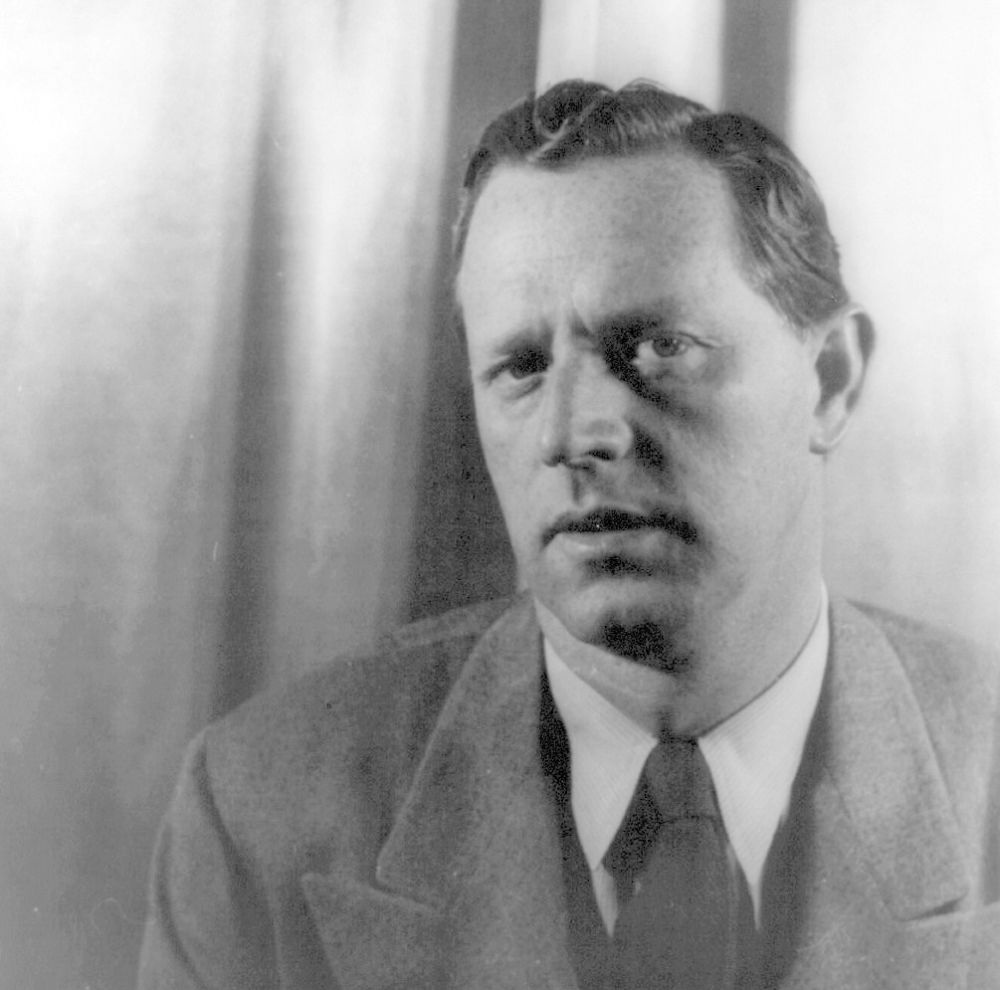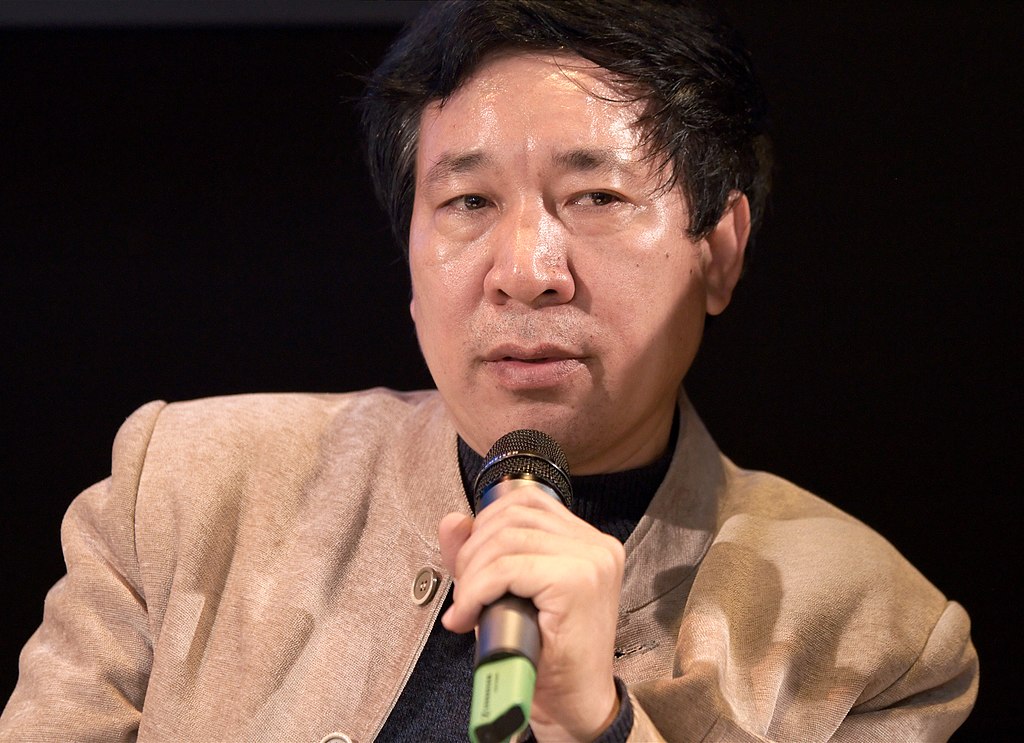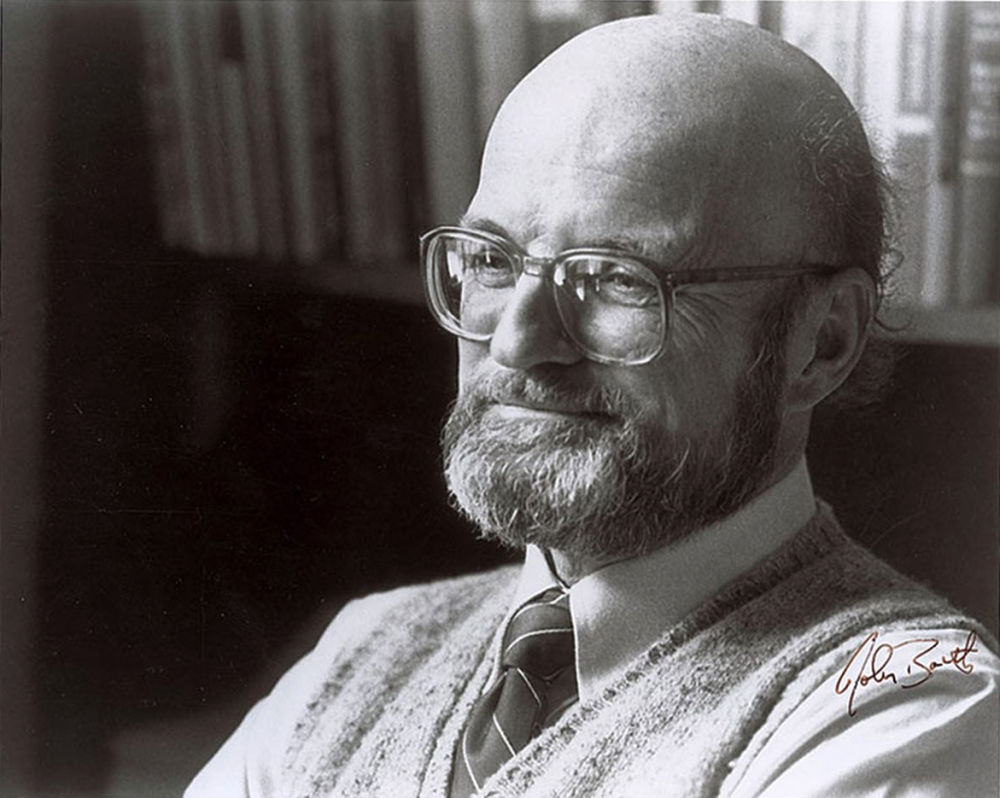Issue 86, Winter 1982
 Erskine Caldwell, ca. 1938. Photograph by Carl Van Vechten
Erskine Caldwell, ca. 1938. Photograph by Carl Van Vechten
Wearing the black socks by which he had said we would recognize him, Erskine Caldwell called for us at a motel in Scottsdale, Arizona. A large-boned six-footer who, in Wilkes-Barre, Pennsylvania, once played professional football, Caldwell’s hair, which in earlier times earned him the nickname “Red,” is now predominantly white; his eyes are an arresting pale blue. On the drive to his Spanish-style, single-story home at the foot of a desert mountain, he remarked precisely each traffic light, turn, and landmark so we could get out there on our own.
On the first afternoon we met with Mr. Caldwell in his red-carpeted study for exactly two hours. “I believe in rules,” he declared, “and you said you wanted to go for two hours.” The most prominent feature of Caldwell’s study is his large wooden writing table, faced away from the window, and its view of the backyard pool. Under the table, just a dunk shot away from the portable typewriter, rests a washtub-sized wooden wastebasket. An exercise bicycle, which Erskine says belongs to his wife Virginia, and she says belongs to him, occupies a corner of the room. Above it the wall is lined with Hogarth prints, purchased in London “when you could still buy them pretty cheap.” In a bookcase along the opposite wall is a well-stocked library of dictionaries (he prefers the “old” Webster’s Collegiate for its etymologies) and books on the English language. We did not notice that the bookshelves contained anything written by him.
With more than eighty million books sold to readers in nearly forty different languages, Erskine Caldwell is one of the most widely read literary figures of the twentieth century. His novel God’s Little Acre has alone sold over fourteen million copies. His books have been made into three movies and three plays; the stage adaptation of Tobacco Road made American theater history when it ran for seven and a half years on Broadway. A versatile and prolific writer, Caldwell is the author of almost sixty books, including novels, short-story collections, autobiographical volumes, interpretive travel books, children’s books, and photo-essay volumes (such as the recently reissued You Have Seen Their Faces) done in collaboration with the photographer Margaret Bourke-White.
In addition to Tobacco Road (1932) and God’s Little Acre (1933), Caldwell’s most celebrated novels are Journeyman (1935), Trouble in July (1940), and Tragic Ground (1944), all of which portray an impoverished, early-century, rural South that is both homeland and wasteland for its troubled and sometimes grotesque inhabitants. In a different genre and a different vein, Georgia Boy (1943), his genial short-story cycle about a small-town family enlivened by the antics of a quixotic father, is in many ways his best book and perhaps an American masterpiece. Caldwell’s latest books are a reissuing of his seventy-five story collection, Jackpot, in a Franklin Library limited edition (1980), and the autobiographical A Year of Living, now in progress.
Erskine Caldwell was born in Coweta County, Georgia, in either 1902 or 1903; there is no accurate record of his birth. He spent his early years living with his parents in a household that moved frequently among the Southern states. On various occasions he attended Erskine College, the University of Virginia, and the University of Pennsylvania, but did not earn a college degree. Following brief stints at a variety of jobs and a term as a reporter for the Atlanta Journal, he moved in 1926 to an old farmhouse in Mount Vernon, Maine; there during the next seven years he served his literary apprenticeship. A thirteen-year marriage to Helen Lannigan ended in 1938. From 1939 to 1942 he was married to Margaret Bourke-White, and from 1942 to 1956 to June Johnson. He is the father of four children, from his first and third marriages. Since 1957 he has been married to his present wife, Virginia Moffett Caldwell, an accomplished artist who has illustrated several of his books.
The first interview session began rather stiffly. Caldwell’s manner was formal as he addressed our questions carefully, in a firm voice still slightly tinged by a Southern accent. He speaks slowly and deliberately, pausing to formulate his replies and select the precise word he desires. His language, in general, is exact without sounding purposely elevated; and he uses an occasional slang term such as “chap” or “punk” as effective seasoning. Seated behind his writing desk, ever now and then he toyed with the typewriter carriage as we talked.
INTERVIEWERS
Mr. Caldwell, what first interested you in becoming a writer?
ERSKINE CALDWELL
Well, I was not a writer to begin with; I was a listener. In those early decades of the century, reading and writing were not common experiences. Oral storytelling was the basis of fiction. You learned by listening around the store, around the gin, the icehouse, the wood yard, or wherever people congregated and had nothing to do. You would listen for the extraordinary, the unusual; the people knew how to tell stories orally in such a way that they could make the smallest incident, the most far-fetched idea, into something extraordinarily interesting. It could be just a rooster crowing at a certain time of night or morning. It’s a mysterious thing. Many Southern writers must have learned the art of storytelling from listening to oral tales. I did. It gave me the knowledge that the simplest incident can make a story.
INTERVIEWERS
How do you go about transforming such a simple incident into a story?
CALDWELL
You get a kind of fever, I suppose, mentally and emotionally, that lifts you up and carries you away. You have to sustain this energy you’ve gotten to write your story. By the time you’ve finished, all your energy, your passion, is spent. You’ve been drained of everything.
INTERVIEWERS
Is this passion something that comes in a flash?
CALDWELL
No. Things that come in a flash you have to hold suspect. If you rely upon a dream, you’re going to be fooled. In the course of writing your story, you have to follow in sequence what your thoughts are.
INTERVIEWERS
But your thoughts have to start somewhere.
CALDWELL
Well, you have an idea to start with, otherwise you wouldn’t sit down at your typewriter. Whatever this idea is, that’s the solid thing you want to work with. You can’t wait for inspiration because it may never come.
INTERVIEWERS
Where do you get that first idea?
CALDWELL
You see a school bus going along out there and you wonder where it’s heading. Then you imagine a school, and a teacher. Well, who is this teacher? What is she like? Does she lead an interesting life? Then you recall some of the teachers that you had in the past. So it keeps on going and going.
INTERVIEWERS
You mention recalling teachers you had known. Would this experience be important?
CALDWELL
Yes. Experience combined with imagination. You have to use your imagination to invent something better than life because life itself is dull and prosaic.
INTERVIEWER
Would this inventing give you your plot?
CALDWELL
No. I’m not interested in plots. I’m interested only in the characterization of people and what they do. I understand you can buy a pamphlet called “The Seven Basic Plots of Fiction.” A plot is applicable to what’s done in a mystery story, where the author knows in the beginning how it’s going to end. I never know how anything is going to end. All I ever know is the first line, the first sentence, the first page. The work terminates itself with dictation from me. Signs and portents indicate in some manner that a conclusion is just around the corner.
INTERVIEWERS
Would this be true of your short stories as well as your novels?
CALDWELL
Both are just a series of events and a cast of people that grow by themselves. I don’t manufacture tapestries. I let the people say or do what’s going to happen next.
INTERVIEWERS
Then your characters control you?
CALDWELL
Completely. These are all entirely new people and that means they’re unpredictable. You see, just like a child has to start from infancy to become a man, the character has to develop. You have a vision of some sort, maybe an insight into his appearance, but if you’re true to what you’re doing, he’s telling you what his action’s going to be and why he did it. If you let a person grow like that, little by little, you will have a character that is believable and maybe memorable to the reader.




